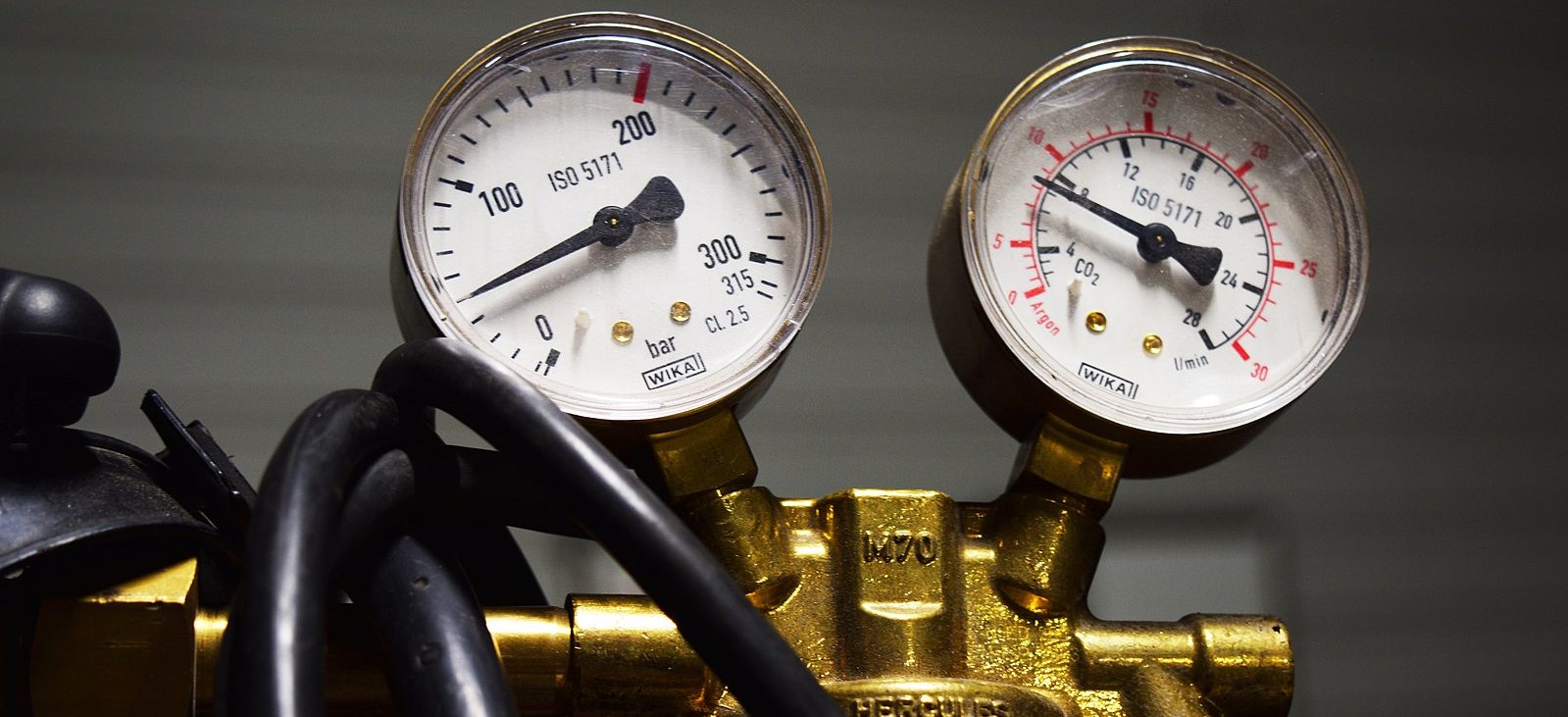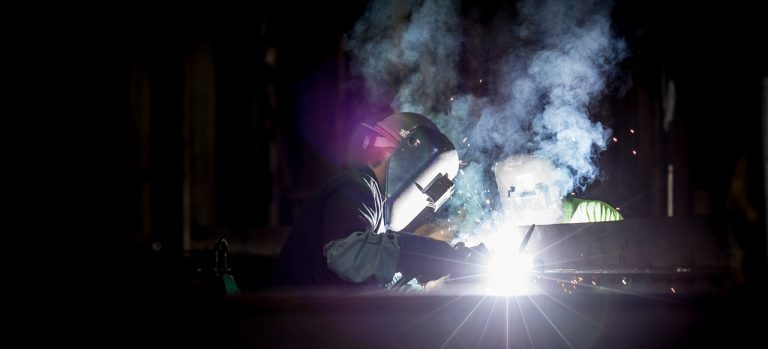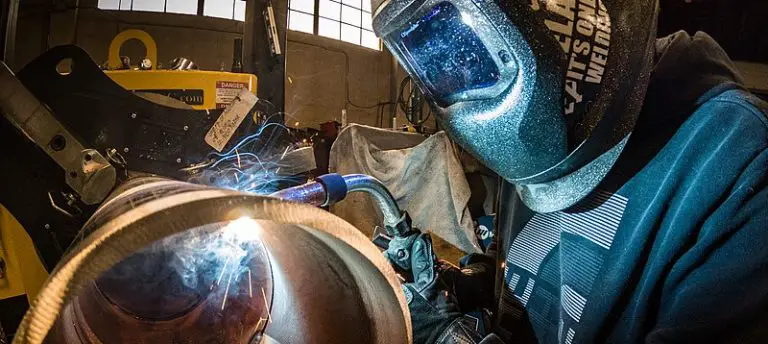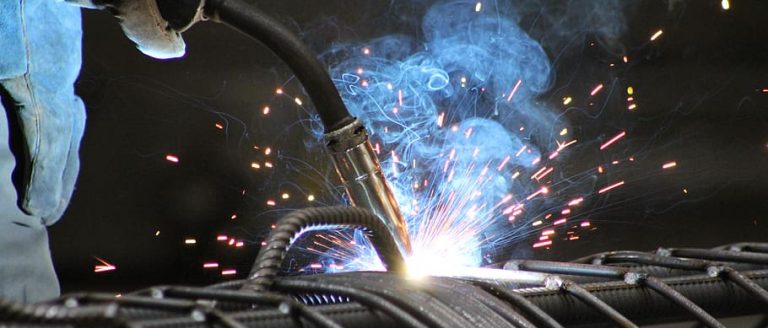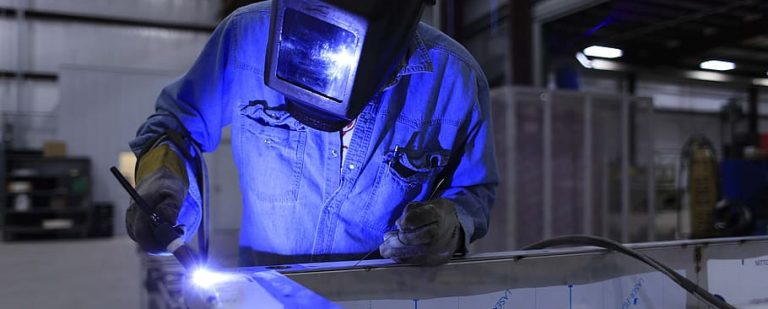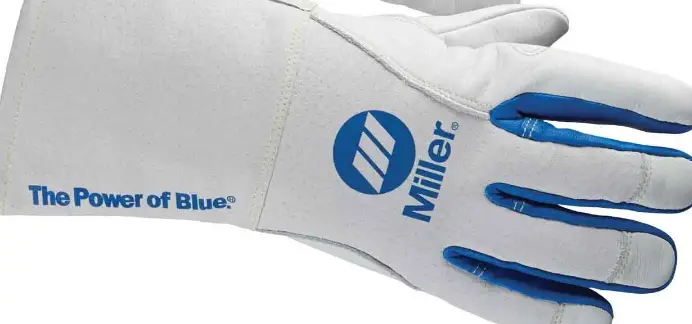Gas For MIG Welding – Proper Selections
This post contains affiliate links.
Selecting a proper gas for MIG welding is essential for adequate penetration, weld appearance, and ease of use. This guide will give you the best answers on gases for flux core, hardwire, aluminum and stainless MIG processes.
You will need an adequate cylinder for the gas you plan on using. You will also need the correct regulator and hose to measure your PSI levels and your CFH flow.
Your local welding gas supply store can get you set up with the correct essentials. The bigger your cylinder is, the cheaper your refills will be per cubic foot, but larger cylinders can be a real pain to transport due to their weight. Always follow correct DOT guidelines for transporting gas on public roads. Spilled gas cylinders can cause a nightmare of problems, so be safe out there.
Gas For MIG Welding
Keep in mind that there are multiple gas options based on personal preference; each filler wire type will run differently based on gas selection.
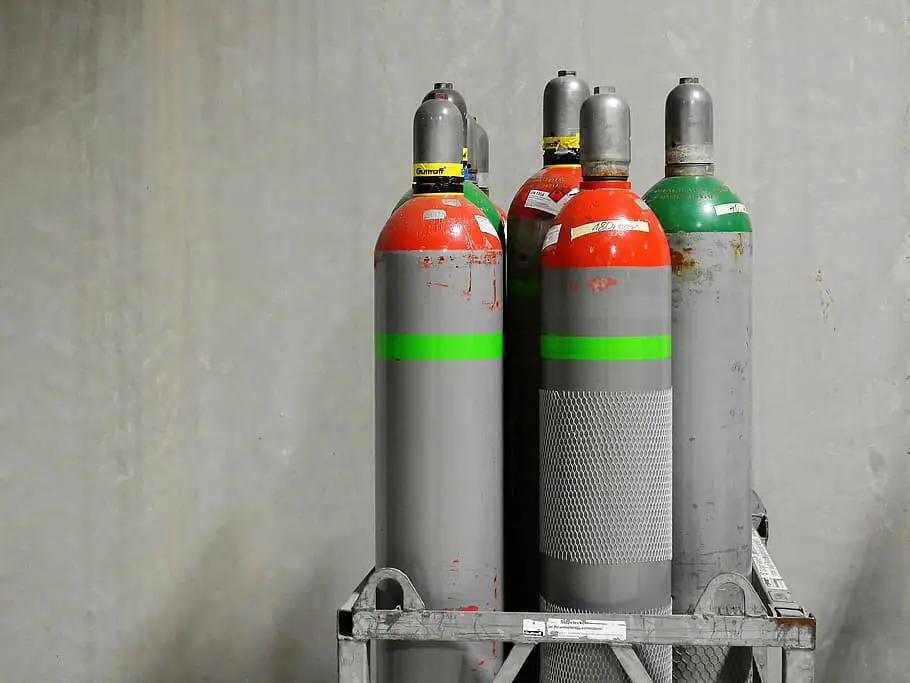
Hardwire MIG Gases
Unlike flux cored wire, hardwire MIG has no built in coating to protect the weld from the atmosphere. It is just a big spool of er70 steel wire. Therefore, gas must always be used to protect your beads.
The most cost friendly option is pure carbon dioxide (CO2). This has amazing penetration on steel, and is very useful for joining thicker pieces of material.
The downside of straight carbon dioxide is that it is messier, and the arc isn’t as smooth. You’ll tend to get way more bb’s with this method. Bb’s are the little round pieces of spatter that stick to your material while you’re welding. They can often be removed with a chisel, but sometimes are a real pain to remove. If you are going the straight CO2 route, using an anti spatter spray before welding can have great results.
In more professional hardwire applications, argon becomes a go to. This inert gas will make up a large percentage of the mixture. We like to use 75% argon mixed with 25% CO2. The arc is much more stable and there is less clean up afterwards. The introduction of argon can produce a narrower bead than CO2. This can be great for smaller fabrication projects and nicer looking beads.
In general, the CFH (cubic feet per hour) flow of hardwire applications will be between 20-30 CFH. This is less than other methods, such as dual shield flux core.
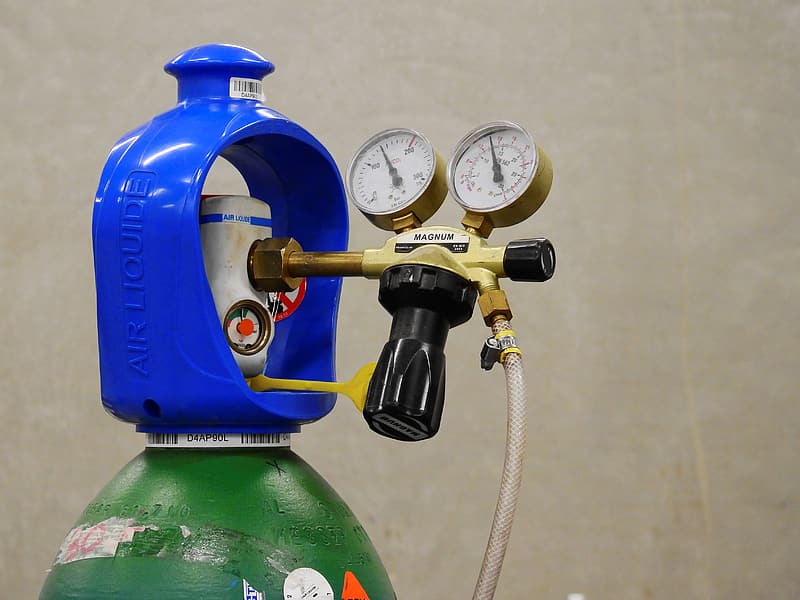
Flux Core MIG
Flux core MIG has flux built in to the wire itself. Similar to stick welding, this flux coating protects the weld from atmospheric contaminants as it produces its own gas. Therefore, you can use some flux cored wires with no gas at all. This is popular for hobbyists using smaller MIG machines. They can just load up the wire and start welding.
These non gas welds aren’t the strongest, but they can hold up quite well for home projects and basic fabrication. The slag at the top of the finished weld will need to be cleaned off (just like a stick weld). This method is also very cost effective for the frugal welder. No gas cylinders and no refills means more money left in your pocket. Smaller spools of flux cored wire are very affordable, as are smaller hobby MIG machines.
Dual Shield Flux Core MIG Gases
For users who want bomb proof penetration, dual shield is the way to go. This uses flux cored wire that is designed to be used with a shielding gas. These welds are generally much wider due to the wire size and hotter arc, and they penetrate steel with a vengeance. This is the go to method for structural welding large I-beams.
Our favorite dual shield gas is a mix of argon and CO2. As with hardwire, a 75% argon/25% CO2 mix is best. We don’t recommend going over 80% argon, as this can lead to subpar results and ugly welds.
In terms of CFH flow, dual shield requires larger flows in excess of 30 CFH. This uses way more gas than hardwire MIG, so be warned.
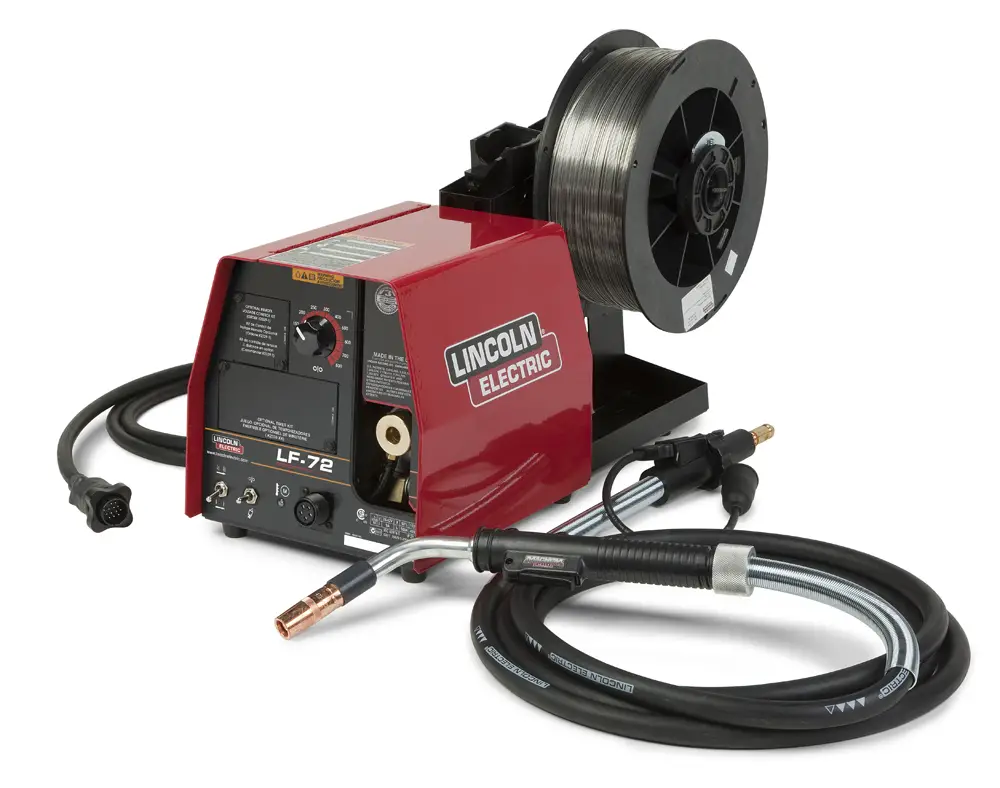
Aluminum MIG Gases
Aluminum welding with MIG requires a spool gun. This gun contains a small roll of wire. The benefit of a spool gun is that it allows you to run the aluminum wire without jamming. Aluminum wire is so soft; if you tried to run it through normal MIG cables, it would jam on the way to the gun. The shorter length of a spool gun allows the wire to contact your aluminum piece within 12 inches of leaving the spool.
We recommend straight argon gas for aluminum MIG. Straight argon also works well with TIG welding aluminum. However, if you are welding aluminum that is thicker than a half inch, you can introduce helium to the mix. A small mix of helium will result in a hotter, smoother weld. Helium doesn’t conduct electricity as well as argon, so you need to bump your voltage up. A 75% argon/25% helium mix works great for thicker aluminum MIG processes.
Stainless MIG Gases
Stainless steel is largely resistant to most corrosion. It contains higher levels of nickel and chromium. This makes it harder for welds to penetrate; beads won’t run as fast as they would on mild steel.
If you plan on MIG welding stainless, the best gas mix is 90% helium/7.5% argon/2.5% CO2. The tri-mix has a very high level of helium, which helps you wet the weld better and penetrate more deeply. This means that the bead is tying in well to both pieces of material. The argon and CO2 are great for getting a stable arc established; but too much of these gases can oxidize the stainless. This can ruin it’s ability to resist corrosion.

